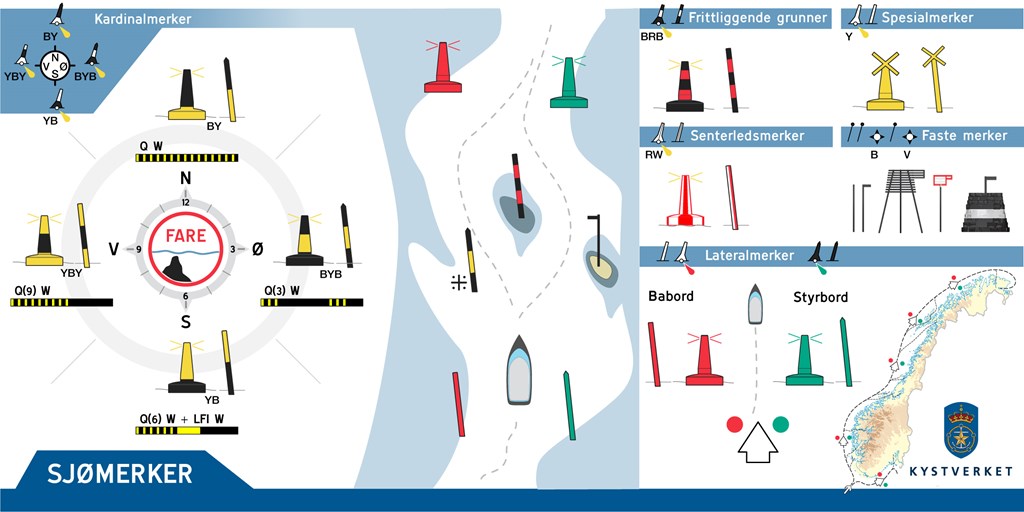A lighthouse is briefly explained as a construction with lights, that guide ships and boats to areas where it is safe to sail along the coast and into ports when it is dark.
All along the Norwegian coast there is a comprehensive system of lighting sectors that define safe routes – where it is safe to travel. Normally you will sail in a white sector of one lighthouse, until you enter a new white sector of the next lighthouse.
In combination with other types of beacons, the lighthouses form a complete system for safe navigation along the coast. Necessary information for using the lighthouse in navigation can be found in nautical charts and in lighthouse lists. Even in daylight, lighthouses can be used as an important landmark for safe navigation.
Throughout history, a total of over 200 manned lighthouses have been built in Norway, but there have never been more than 154 in operation at the same time. The technological development has made manned lighthouse services superfluous, and today all lighthouses are unmanned. Just over 100 of the lighthouses are still in operation as navigation installations.

